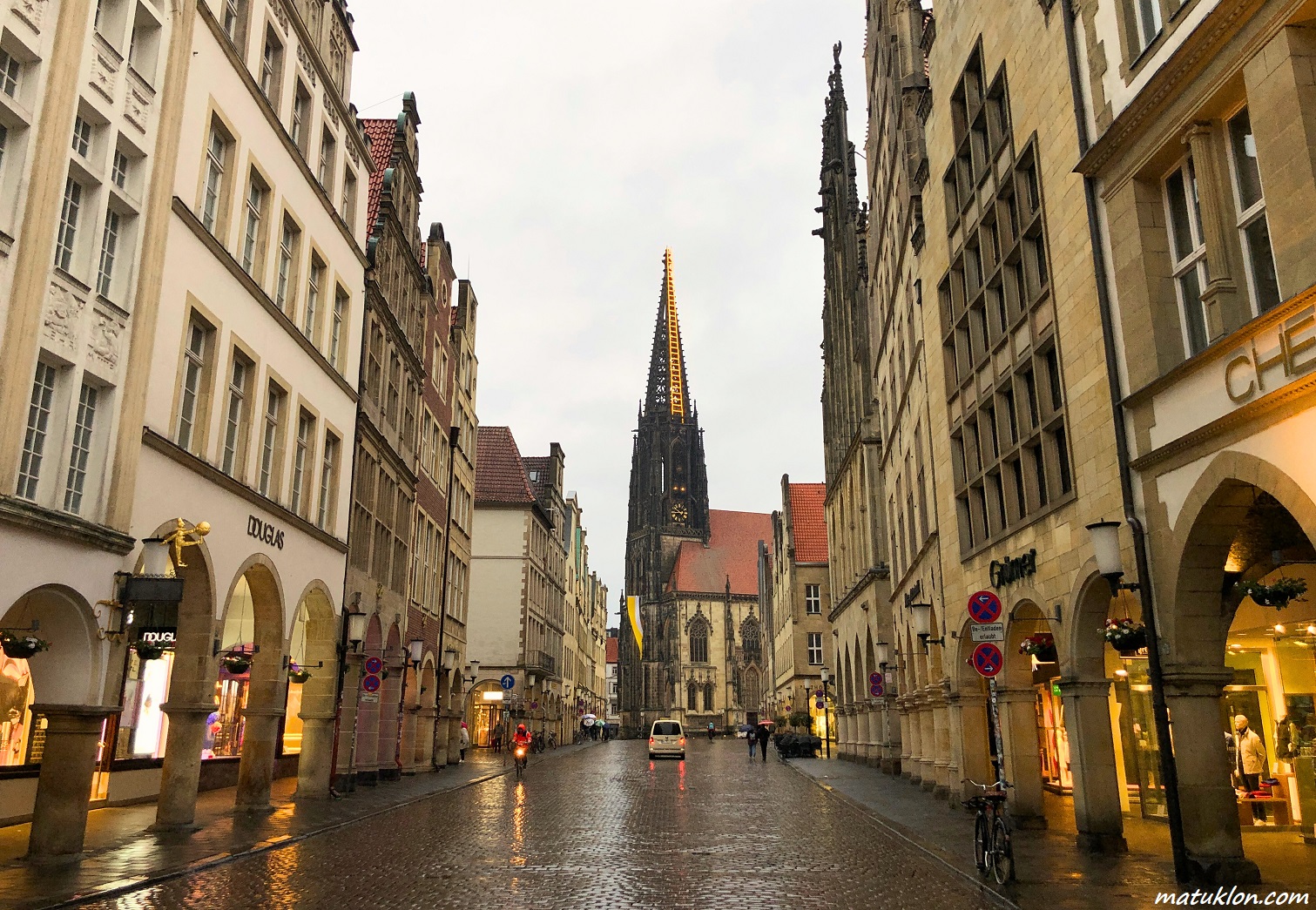Exploring Münster in One (Rainy) Day
You can hardly call Münster a popular tourist destination. Some of us know the name, but how many have actually thought of visiting? Or know someone who has?
I decided to give this modest city a go, pairing it with Düsseldorf for an extended weekend trip.
Main information
Münster is located in the western part of Germany, in a state called North Rhine-Westphalia.
It’s a rather small city by German standards, with “only” about 307,000 inhabitants.
The low population is even outnumbered by bicycles, which has earned Münster the nickname “Bicycle Capital”.
It’s also known as the “City of Peace and Dialogue” as the Peace of Westphalia was signed here in 1648, thus ending a decade-long war.
Back in 2004, it won the LivCom-Award for “the most liveable city in the world”.
 Westphalian State Museum of Art and Culture (LWL-Museum für Kunst und Kultur)
Westphalian State Museum of Art and Culture (LWL-Museum für Kunst und Kultur)
Getting there
Münster’s airport (shared with Osnabrück) is located only 35 minutes by bus from the city. Although the air network is limited mostly to southern Europe and Turkey, the prices can be very enticing. My flight from London Stansted cost about £27, but I’ve seen them going for as little as £13!
Münster is also linked by rail with many big German cities, reaching as far as Berlin and Nuremberg. There is even a quick and direct connection to Amsterdam!
Prinzipalmarkt
The picturesque “main market” is the heart of the city. Rows of buildings with long gables line this narrow cobbled street. Although badly damaged during the WWII, they’ve been faithfully rebuilt to reflect the original style dating back hundreds of years.

Prinzipalmarkt stretches from the Townhouse Tower (Stadthausturm) up to St. Lambert’s Church (Lambertikirche). Under the elegant arcades, you’ll find some high-end shops and cafés. And right in the centre, there is a historic Town Hall (Rathaus), designed in the Gothic style. That’s where the peace treaty I was talking about earlier was signed.

Münster Cathedral
This Romanesque/Gothic cathedral is dedicated to St Paul (hence the German name St.-Paulus-Dom), but opposite the entrance you see an oversized St Christopher instead. The giant saint is carrying the Christ Child and holding a treebranch in the other hand. Carved by Johann von Bocholt in the 1600s, today it’s still towering somewhat frighteningly over the pews.

I’m not normally into churches and cathedrals, but I ended up staying there longer than just to wait out the rain. The Sunday service was just going inside and I hung around for the homily (which of course was in German), impressed at how much I was able to understand!

Lake Aasee
This artificial lake has more than quadrupled in size since its creation in the 1930s. Today, it’s bigger than the Old Town! Not only is it the habitat for many species, but it also cools the air in the city and protects it from getting flooded.
In 2008, the surrounding green space was voted Germany’s most beautiful park – only to snatch this title on the European scale the following year. While I think it’s a bit exaggerated, there is a serene ambiance around that area for sure. Sailboats are meandering around the lake. Duck families are eyeing you curiously before swimming away with caution. And even on a drizzly Sunday morning, countless joggers pass you by. My relaxed walk along the Aasee was a highlight of the whole visit.

It’s easy to walk past this tree, so look out for it on the southern bank. It was planted by the regional branch of the Tibet Initiative to mark the Dalai Lama’s birthday in 1994. “For the world peace,” says the accompanying plaque.

Münster University
If there’s only one thing that Münster is know for, it is the prestigeous university, which ranks in the German top 3! Its symbol is the impressive Schloss – once a residential mansion, now the uni’s administrative centre. Behind it, there’s a park and a botanical garden. The whole area is enclosed by a moat in the shape of a pentagram. You’ll immediately spot it on the map!
Unfortunately, at that point rain has intensified and I ended up navigating the wet grass and muddy paths with umbrella in hand. Even though I would have liked a drier weather, it did add to the ambiance.

Record shops
For its small size, Münster surprised me with its choice of record shops. The first one I went to was the tight but well-kept Kernkrach Schallplatten. Around the corner was a much bigger Poptanke which also carries books and has a very reasonably priced stock.
Right in the city centre there’s Andrä, focused as much on CDs as on vinyl. For absolute pennies, I treated myself to a few CDs I always wanted to have, and which take me back right to my childhood. But I won’t tell you what they are! 😝
 Andrä record shop
Andrä record shop
One important tip!
To be honest, Münster turned out one of the least impressive German cities I’ve been to. But I’d still give it a revisit for the relaxed character, and to check out the spots I missed the first time around (such as the hip canal area Stadthafen). And you should too!
Just make sure you secure accommodation well in advance, especially if you’re on a budget. I got around to booking mine weeks before which is reasonable. Not this time! All that was available were a few pricey hotels and private appartments. Neither Booking nor Hostel World had anything affordable, but then just days before, something turned up at Jugendgästehaus Aasee. Even at the time of writing, weekend availability in Münster is for some reason very limited for months ahead! So, be better organized than I was.
 Claes Oldenburg’s Giant Pool Balls, with someone’s added political message
Claes Oldenburg’s Giant Pool Balls, with someone’s added political message
